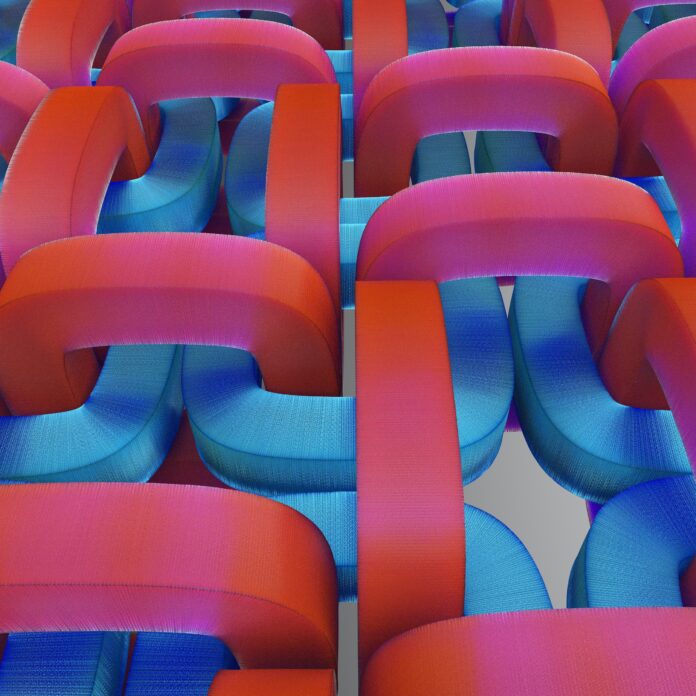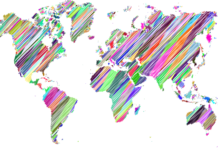AI-Quantum Sensors: Unveiling a New Dimension in Measurement and Sensing
In the fascinating realm of quantum mechanics, where the laws of classical physics break down and the strange and counterintuitive behavior of particles reigns, a new frontier of technology has emerged – quantum sensors. These remarkable devices harness the principles of quantum mechanics to push the boundaries of measurement and sensing, promising unprecedented levels of precision and accuracy that were once thought to be unattainable. Quantum sensors represent a groundbreaking leap in various fields, ranging from fundamental physics and astronomy to healthcare and navigation systems. By delving into the intricacies of quantum sensors, we can uncover their inner workings and explore the transformative potential they hold for our technological landscape.
At the core of quantum sensors lies the intricate dance of quantum particles, where the classical notions of position, momentum, and energy become blurred, and probabilities take center stage. Unlike classical sensors that rely on the behavior of macroscopic objects, quantum sensors leverage the unique properties of quantum systems, such as superposition and entanglement, to achieve feats that would be inconceivable using classical methods. The journey into the world of quantum sensors begins with an understanding of quantum coherence – the phenomenon where quantum particles exist in a delicate balance of multiple states until observed, causing them to collapse into a single state. This principle forms the bedrock of many quantum sensing techniques.
One of the most promising applications of quantum sensors lies in their role as ultra-sensitive detectors. Traditional sensors, due to their reliance on classical physics, have inherent limitations to their precision. Quantum sensors, on the other hand, exploit the inherent uncertainty and probabilistic nature of quantum mechanics to achieve levels of sensitivity that were once thought to be beyond the reach of technology. For instance, quantum sensors can be employed to detect faint magnetic fields, gravitational waves, and even minuscule shifts in time. This capability has far-reaching implications in fields like astronomy, where quantum sensors can aid in mapping cosmic magnetic fields and studying the gravitational waves generated by cataclysmic events in the universe.
Quantum sensors also hold the potential to revolutionize navigation and positioning systems. Global Navigation Satellite Systems (GNSS), such as GPS, have become ubiquitous in modern life. However, their accuracy is inherently limited by the classical physics-based principles they rely on. Quantum sensors offer a pathway to enhance the precision of navigation by exploiting the phenomenon of quantum entanglement. Entanglement allows two or more particles to become interconnected in such a way that the state of one particle instantaneously influences the state of another, regardless of the distance between them. This property can be harnessed to create incredibly accurate sensors for measuring position, velocity, and acceleration. Quantum-enhanced navigation could find applications in autonomous vehicles, precision agriculture, and even in the field of fundamental research.
The medical field, too, stands to gain immensely from the capabilities of quantum sensors. Magnetic Resonance Imaging (MRI), a widely used medical imaging technique, already capitalizes on the principles of quantum mechanics. Quantum sensors can take this a step further by providing enhanced imaging resolutions and reduced scanning times, ultimately leading to quicker and more accurate diagnoses. Moreover, quantum sensors can enable the detection of biomagnetic fields associated with brain activity, paving the way for more advanced studies in neuroscience and potentially revolutionizing our understanding of the human brain.
Quantum sensors are not confined to terrestrial applications – they are poised to redefine space exploration as well. In the vacuum of space, where classical signals can be distorted or weakened, quantum sensors offer a robust means of communication and measurement. Quantum communication using entangled particles could revolutionize secure communication across vast distances, ensuring that messages cannot be intercepted without disturbing the delicate entanglement. Additionally, quantum sensors could aid in gravitational measurements, potentially leading to the discovery of new cosmic phenomena and a deeper understanding of the fundamental nature of the universe.
In conclusion, quantum sensors represent a paradigm shift in measurement and sensing technology. By tapping into the intricate fabric of quantum mechanics, these sensors offer unprecedented levels of precision, sensitivity, and accuracy across various fields. From unraveling the mysteries of the cosmos to enhancing medical diagnostics, and from revolutionizing navigation systems to enabling secure communication in space, quantum sensors hold the promise to reshape the technological landscape. As research and development in this exciting field continue to unfold, the practical applications of quantum sensors are bound to become an integral part of our daily lives, driving innovation and expanding the horizons of what is possible.
Enhanced Sensitivity and Precision:
Quantum sensors leverage the unique properties of quantum mechanics to achieve unparalleled levels of sensitivity and precision. They can detect faint signals, such as weak magnetic fields or tiny shifts in time, with an accuracy that surpasses classical sensors, opening up new possibilities for scientific research and technological applications.
Utilization of Quantum Coherence:
Quantum coherence, the delicate balance of multiple quantum states, is a fundamental principle harnessed by quantum sensors. By exploiting this phenomenon, these sensors can maintain the coherence of quantum states over longer periods, enabling them to perform more accurate and stable measurements.
Quantum Entanglement for Interconnectedness:
Quantum entanglement, where particles become interconnected regardless of distance, is a feature that enables quantum sensors to surpass classical limits. By using entangled particles, these sensors can achieve correlations and measurements that would be impossible with classical particles, paving the way for advanced applications in communication, navigation, and more.
Potential for Miniaturization:
Quantum sensors have the potential for miniaturization due to their reliance on the behavior of individual quantum particles. This opens up opportunities for creating compact, portable devices that can be integrated into various systems, from medical instruments to consumer electronics.
Diverse Range of Applications:
Quantum sensors have applications across a wide range of fields, including fundamental physics, astronomy, healthcare, navigation, and communication. Their versatility makes them valuable tools for advancing scientific understanding and technological innovation, with the potential to transform industries and reshape our approach to measurement and sensing.
In the enigmatic realm where quantum mechanics holds sway, a revolutionary class of devices has emerged, poised to redefine the boundaries of measurement and sensing. These remarkable creations, known as quantum sensors, harness the elusive behaviors of subatomic particles to unlock levels of precision and accuracy that were previously deemed unattainable. Quantum sensors encapsulate the essence of quantum mechanics, a field that challenges our intuitions and stretches the limits of our understanding.
At the heart of quantum sensors lies a dance of particles that defies the conventional rules of classical physics. These sensors navigate the intricate landscapes of superposition and entanglement, concepts that once belonged to the realm of thought experiments and theoretical musings. Superposition allows particles to exist in multiple states simultaneously, their properties interwoven in an ethereal ballet of probabilities. Entanglement, on the other hand, bestows particles with a connection so profound that the state of one instantaneously influences the state of another, regardless of the spatial expanse between them. These mesmerizing phenomena form the bedrock of quantum sensing, enabling the creation of devices that blur the lines between the tangible and the uncertain.
The journey into the world of quantum sensors unveils a tapestry of potential applications that extend far beyond the confines of laboratories. In the realm of quantum-enhanced imaging, these sensors hold promise for revolutionizing medical diagnostics. By harnessing the nuances of quantum coherence, they offer the potential to enhance the resolution and speed of imaging techniques like Magnetic Resonance Imaging (MRI). This could lead to quicker and more accurate diagnoses, enabling healthcare professionals to peer deeper into the mysteries of the human body.
Astronomy, too, stands to benefit from the advent of quantum sensors. These devices could unravel cosmic enigmas by detecting and mapping faint magnetic fields in space. The intricate interplay between quantum states allows for the creation of sensors that can discern the faintest magnetic signatures, unveiling hidden facets of celestial objects. Furthermore, quantum sensors could aid in the observation of gravitational waves, ripples in the fabric of spacetime that carry whispers of cataclysmic events across the cosmos. With their unprecedented sensitivity, quantum sensors could help scientists capture and decipher these elusive signals, ushering in a new era of gravitational wave astronomy.
The world of navigation and positioning is on the cusp of transformation due to the advent of quantum sensors. While Global Navigation Satellite Systems (GNSS) have become integral to modern life, their accuracy is bounded by the classical principles they rely upon. Quantum sensors offer a quantum leap in accuracy by exploiting the phenomenon of quantum entanglement. The entangled particles, spread across space, hold the potential to create highly accurate sensors for measuring position, velocity, and acceleration. This quantum-enhanced navigation could find applications in autonomous vehicles, guiding them with unparalleled precision, and could lay the foundation for the next generation of navigation systems.
Venturing beyond our planet, quantum sensors are poised to play a pivotal role in space exploration. The vacuum of space provides a unique canvas for their capabilities to shine. Traditional signals can become distorted over vast distances, while quantum communication using entanglement remains remarkably robust. This offers the potential for secure and unbreakable communication channels that could redefine how we transmit information across the cosmos. Furthermore, quantum sensors could aid in the study of gravity, enabling us to gain deeper insights into the fundamental forces that shape the universe.
The practical implications of quantum sensors also extend to fields as diverse as materials science and environmental monitoring. These sensors could provide new avenues for studying the properties of materials at the quantum level, offering insights into their behaviors and interactions that were previously inaccessible. In environmental monitoring, quantum sensors might contribute to detecting subtle changes in the environment, from monitoring pollutants to studying the effects of climate change.
In conclusion, the journey into the world of quantum sensors unveils a tapestry woven with threads of mystery, potential, and transformative impact. These devices, which exploit the delicate dance of quantum particles, offer a glimpse into a future where our ability to measure and sense the world around us reaches unparalleled heights. From enhancing medical diagnostics to mapping cosmic magnetic fields, from guiding autonomous vehicles to redefining communication in space, quantum sensors promise to reshape our technological landscape and deepen our understanding of the universe itself. As we stand at the threshold of this quantum revolution, the path forward holds the promise of innovation, discovery, and a profound shift in how we perceive and interact with the world.






















